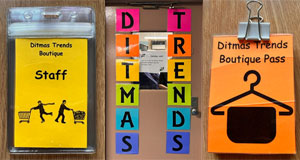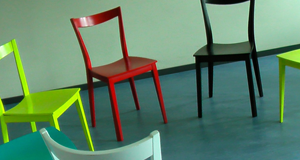Your Team is a Gift
Supporting and building a culture of collaboration

In almost every conversation I have with educators, especially when working together to move to project-based learning, collaboration is a major topic of concern. Based on their previous experience with collaborative projects, everyone seems to want more ideas for getting students to work together successfully.
If you ask your students what they think of collaborative, or team projects, many will share that they would prefer not to work in teams. They often find it difficult to get group consensus or even to persuade others to consider their ideas, let alone move forward as a group. Inevitably, there are complaints that one person did all the work and someone else didn’t do any.
Working in teams is a gift… a precious resource that allows a single individual to overcome problems or obstacles they can’t solve or surmount on their own. It is an opportunity to both meet someone new and learn something new together. It is an opportunity to work and to have fun during the work of project-building, even if the problem you are tackling is difficult.

Your job is not to make it easy to work in a team, or even to solve a team’s problems. When a student comes up and complains that someone isn’t doing their share of the work, respond with, “What do you think you and the rest of your team can do to change that?” This transfers responsibility to students and makes them equal partners in the learning process.
Successful Team Behaviors
Teaching collaboration is like teaching anything else — as much an art as a science. There is no easy solution, but there are a variety of strategies you can employ to help learners recognize and utilize the strengths of a team to reach their goals.
Here are a few behaviors you can encourage to help students make the most of their collaborative efforts.
Clarify and Commit to Team Goals
Work to ensure every teammate participates in developing the team’s goal as well as the tasks necessary to achieve it. If everyone is not on board, reevaluate the goal and revisit the work necessary to reach it.
Designate check-in points during the process to evaluate whether the work you are doing is still directed toward your goals and on track to help you meet them.
Communicate with Respect
Listen to what every team member is saying and encourage everyone to contribute. Clearly communicate information, ideas, and achievements with everyone on the team.
Each team member needs to share the work they are doing and ask questions when they need help. Working in a team means that individual members should be able to easily retrieve information and should not have to repeat work someone has already completed.
Encourage and Support Risk Taking
We are most open to new ideas when we are working in areas where we are not comfortable. Push all team members to explore new ideas, skills, and strategies, encourage them when they take risks, and be supportive of their efforts.
Creativity comes from unexpected places. Let a new idea take the team in a non-standard direction; it often makes work more effective.
Evaluate and Celebrate
Stop periodically to take a critical look at the work the team is doing. Direct critiques at the work, not the people. Conflicting thoughts not only encourages new ideas, but also helps a team determine the best course of action.
When the team does good work, celebrate. Take pride in the great work you are doing. Success for one is success for all.
Create the Culture Together
This is not meant to be a list of rules to give to your students, but a set of ideas to consider as you support their work. Bring up goals important to you, but as you get more comfortable supporting collaboration, work with your students to establish norms for group work together.
If you are implementing project work across a number of grade levels, use your experience and the ideas above to have a faculty discussion about which areas you might want to focus on at each grade.
No matter where you are in your teaching journey, it’s time to create… together!










